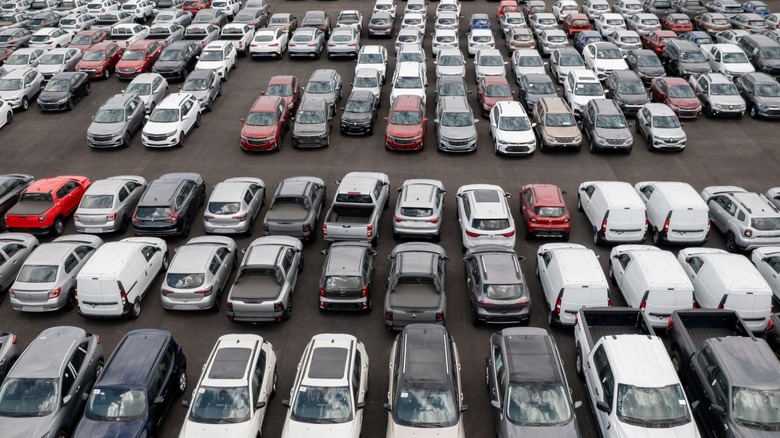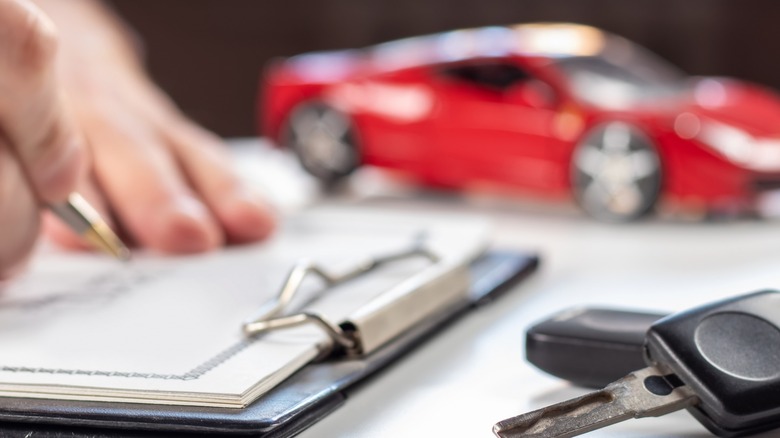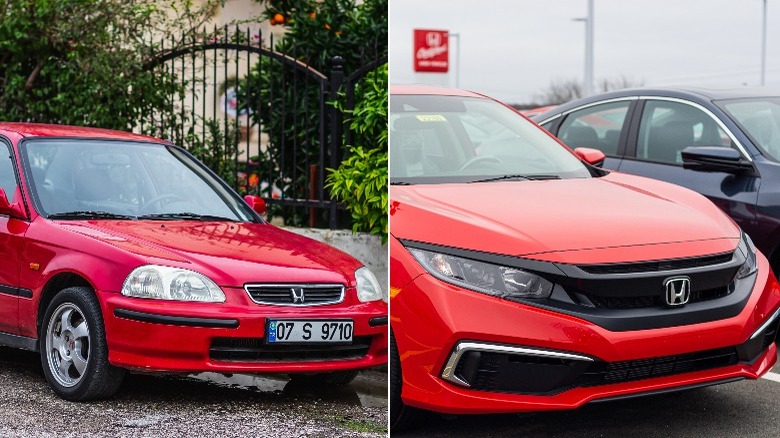Why Are Small Cars Getting Bigger?
When you take some time to look around a parking lot or glance at vehicles on the highway, you'll notice that the cars around us are changing. Sport utility vehicles, also known as SUVs, are replacing sedans; even the compact cars we once knew and loved, like the Mini Cooper, Honda Civic, and Toyota Camry, are becoming bulkier with each new model.
We could say it reflects what most of us want and need. There's our appetite for tech—connectivity, touchscreens, and the host of driver-assist features that make driving less of a chore and more of an experience. All these gizmos need space. Drivers appreciate a car with a bit of legroom and a trunk that can hold a lot more than a few grocery bags.
Since the whole business of cars is making the ones that appeal to everyone, and more people seem to want extra space and cool new features, it makes sense for automakers to keep expanding car sizes to meet the demands of buyers, right?
Well, it's more than a simple case of demand and supply. There's a complex interplay of technical, economic, and legal factors involved, one that stretches back decades.
Let's start with the laws
Back in the 1970s, the U.S. had a major oil crisis. And the government's response to this was to roll out policies to encourage carmakers to make more fuel-efficient cars. So, the Corporate Average Fuel Economy (CAFE) Standards were established to ensure everyday vehicles consumed less fuel and emitted less carbon emissions.
But here's where things start getting interesting. The law recognizes vehicles in two broad categories. First, there are passenger cars – think sedans and wagons – which get stricter requirements on how much fuel they can use per mileage. Then, there are the light trucks, which, back in the day, meant pickups. These bigger, more industrial vehicles were given a bit more wiggle room on fuel economy because of the heavy-duty tasks they were designed for.
So, automakers got the brilliant idea to simply jazz up pickup trucks into something you'd drive every day, not just for carrying heavy loads. Just like that, the SUV was born.
Now, it doesn't just end here. The CAFE standards also measure a car by its footprint—which really is the dimension of the car and the space it takes up on the road, marked by its tires. Bigger cars have a bigger footprint, and oddly enough, that means they don't have to be as fuel-efficient as smaller cars.
So, while the original objective behind these laws was to conserve fuel and protect the environment, they also, inadvertently nudged automakers to think bigger—literally. That's why today, we're witnessing formerly compact cars getting larger in size and our roads and lots getting filled with more SUVs than ever.
The appeal of SUVs and trucks
Sadly, sedans are losing their popularity. Once, according to a U.S. Environmental Protection Agency report published in 2022, sedans held about 80% of the market share in the U.S. However, the market has drastically changed over the years, as trucks and SUVs now account for over 80% of new car sales.
You have to remember that the car business runs for profit. Seeing the surge in SUV sales, companies like Ford and General Motors are trimming down their production of the once popular traditional cars—coupes, sedans, hatchbacks—and shifting their focus and resources into releasing more of what sells—crossovers, trucks, and SUVs.
While there are things to consider before choosing between a truck and an SUV, it's really not that hard to see why millions of Americans find big vehicles appealing. Start with the sheer amount of space SUVs and trucks have to offer. It's perfect if you've got a large family, a lifestyle that involves moving around with a lot of stuff, or you are just a tall person who can appreciate the extra legroom.
People buy cars because of what they need. You can find an SUV with exceptional gas mileage, and in addition to its powerful performance, it comes with all that space to help you haul all your groceries and camping gear; pick up one of the most powerful trucks ever built, and it comes with all that muscle you need to tow whatever needs to be towed. Or you get an SUV that's great for off-roading, and then no place is off-limits for you.
Not many sedans can match up to the level of flexibility bigger vehicles provide, which is what most Americans apparently are looking for.
Safety features and evolving tech
It's easy to look at the Honda Civic now, and the one produced in 1973, and think, "Why can't carmakers keep cars small?" However, these once really compact cars aren't expanding just for the sake of it. As technology improves and national policies prioritize safety, carmakers change their designs to meet modern standards.
Back then, cars were pretty basic and only traveled short distances. But now, with seat belts, airbags, and advanced driver assistance systems (ADAS), and carmakers using more robust exterior casing so their cars can perform better in crash tests, cars are gradually expanding.
On the one hand, with aerodynamics, the weight isn't so problematic, ensuring your car, despite its size, can cut through the air with less resistance and perform well. On the other hand, America's relationship with big cars isn't only for its aesthetics; many people report feeling safer in them. This older report from NBC News claims that drivers behind the wheel of SUVs have a higher chance of surviving an auto crash—10 times those in smaller vehicles.
But bigger cars aren't safe for everyone
One reason most people prefer large cars is because of how high up it is, giving them a better view of the road. But here's the catch—while it's great for you from your SUV, it's not necessarily as great for everyone else. First, for anyone else on the road, in anything smaller, it feels like every other vehicle is towering over you. On a busy road, these bigger vehicles can block your view, making it hard to see what's happening ahead or around you.
Now, statistics show that if you're driving an SUV or truck, you have a better chance of surviving an auto crash. But what about people outside the car, like someone walking or cycling, or even drivers in smaller cars?
With the design of bigger vehicles, they're usually not just tall; they're bulky with higher bumpers. This means if they hit a pedestrian or cyclist, the injuries are likely to be way more serious because of where the impact will most likely occur—somewhere higher up on the body.
Plus, although big vehicles give you an elevated view of the road, you could miss smaller objects next to the car or directly behind the car. Tragically, kids are often the victims of accidents caused by the blind zones of SUVs and trucks as reported by CBS News.




